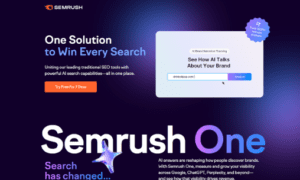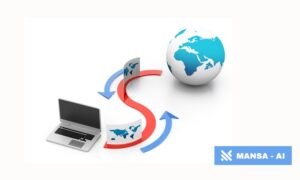AI is changing how legal work gets done. Demand letters, a key part of legal practice, are seeing big changes thanks to AI. It’s not just about doing things faster; it’s about doing them better.
AI can really improve the demand letter process. It gives firms more control, better accuracy, and the efficiency they need. This helps them serve their clients in the best way possible.
AI tools can now create complex legal language quickly and accurately. This is a big step forward for legal professionals.
Benefits of AI-Powered Demand Letters
AI brings a lot to the table. It’s not just hype; there are real, tangible benefits. Think faster work, fewer mistakes, and better results.
AI can pull info from different places fast. This means less time spent digging through files and more time focusing on the case.
AI helps create better demand letters. This leads to happier clients and stronger legal outcomes.
Increased Efficiency and Faster Turnaround Times
AI-powered systems are quick. They can find what you need fast, cutting down on wait times.
AI can automate a lot of the demand letter process. This frees up lawyers to focus on other important tasks.
Faster turnaround times mean happier clients. It also means the firm can take on more cases.
Enhanced Persuasiveness with Data-Driven Insights
AI can analyze data to make demand letters more persuasive. It’s about using facts to build a stronger case.
AI helps tailor each letter to the specific case. This makes the arguments more relevant and impactful.
With AI, legal professionals can create demand letters that really hit home. This leads to better outcomes for their clients.
The Accuracy Advantage: Demand Letter Generators Versus Manual Drafting
In the legal field, accuracy is super important. A mistake in a demand letter can hurt your case. It can damage your reputation, weaken your client’s position, and even cause you to miss chances to settle.
Manual drafting lets you control everything. But, it also means there’s a chance for human error. Demand letter generators can really help improve how accurate your letters are.
Minimizing Human Error in Legal Documents
Manual drafting? It’s got risks. Typos, wrong dates, missed clauses. These mistakes can undermine your whole case.
AI-powered tools can catch these errors. They check for inconsistencies and missing info. This helps make sure your documents are solid.
Think of it as a safety net. It catches those little mistakes that can cause big problems.
Ensuring Consistency Across All Communications
Consistency matters. It shows you’re professional and detail-oriented. Demand letter generators help keep things consistent.
They use templates. These templates make sure all your letters follow the same format and include the right info. This is especially helpful if you have multiple people working on cases.
No more guessing. Everyone’s on the same page, and your letters look polished.
Leveraging AI for Legal Documents
AI isn’t just about speed. It’s about accuracy too. AI can analyze data and find errors that humans might miss.
AI-powered tools can check citations, verify facts, and make sure your legal arguments are sound. This gives you an edge.
AI can help you build a stronger case. It’s like having a super-smart research assistant that never gets tired.
Choosing The Right AI Solution For Your Needs
It’s time to pick an AI solution. Not all are created equal. The right choice can transform your demand letter process.
Consider what your firm really needs. Think about volume, integrations, and ease of use. Don’t rush this decision.
This choice impacts efficiency and client satisfaction. A good fit streamlines drafting and boosts competitiveness. Let’s explore key factors.
Key Considerations When Selecting an AI Platform for Demand Letters
What should you look for? Several factors matter. Prioritize features that align with your firm’s specific needs.
Integration capabilities are vital. The AI should work with your existing systems. This avoids data silos and duplication.
Consider security and compliance. The platform must protect sensitive client data. Look for features like encryption and access controls.
Volume Capabilities for High Caseloads
Can the AI handle your workload? Volume capabilities are key. A busy firm needs a system that scales.
Think about peak demand. The AI should maintain performance under pressure. Slowdowns can negate efficiency gains.
Demand letter generation speed matters. The faster, the better, especially with many cases. Choose wisely.
Attorney-Vetted Templates and Data Validation
Templates save time. Attorney-vetted templates ensure quality. Look for a library of options.
Data validation is crucial. The AI should verify information automatically. This reduces errors and improves accuracy.
AI is a tool, not a replacement. Human oversight remains essential. Review and approve all AI-generated content.
Implementing AI For Powerful Demand Letters: A Step-By-Step Guide
Assessing Current Processes and Identifying Pain Points
Before jumping into AI, it’s smart to look at how things are done now. What’s slow? What causes headaches? Where do things get stuck? This helps figure out where AI can make the biggest difference. Think about the current demand letter process.
What are the bottlenecks? Where are the inefficiencies? Knowing these pain points is key to a smooth AI integration. It’s like diagnosing a problem before trying to fix it.
Consider things like time spent on each letter, common errors, and client satisfaction. This assessment shows where AI can streamline workflows.
Establishing Integration Points with Existing Systems
Next up, figure out how the AI will fit in with what’s already being used. Where will the AI connect with case management systems? What about document tools? How will data move between them?
It’s important to work with the IT team and the AI vendor to make sure everything talks to each other. Demand letter creation should be a smooth process.
Seamless integration is the goal. This means data flows easily, and there are no awkward gaps in the workflow.
Training Staff and Deploying New Technology
Once the AI is set up, it’s time to get everyone on board. Training is key. Show the staff how to use the new tools. Explain how it will make their jobs easier.
Start with small groups, then roll it out to the whole firm. Hands-on practice is the best way to learn. Encourage people to experiment and ask questions.
Don’t forget ongoing support. Be ready to answer questions and troubleshoot problems as they come up. This ensures everyone feels comfortable and confident using the AI.
Leveraging AI to Create Powerful, Persuasive Demand Letters
AI is changing how legal professionals approach demand letters. It’s not just about speed; it’s about crafting messages that get results. Let’s explore how to make AI work for you.
Establishing Clear Guidelines for AI Usage
It’s important to set rules for how AI is used in your firm. This ensures consistency and compliance. Think of it as creating a style guide for your AI.
- Define the tone you want.
- Specify language preferences.
- Outline formatting standards.
Utilizing Customization Options for Firm Style
AI tools aren’t one-size-fits-all. Demand letter platforms often let you customize the output. Tailor the AI to match your firm’s unique voice and style.
- Adjust the tone to be formal or informal.
- Incorporate specific legal jargon.
- Use your firm’s letterhead and branding.
Incorporating Case-Specific Details with AI
AI can handle the repetitive tasks, but it needs your input. Make sure to include all the relevant details for each case. This ensures the demand letter is accurate and persuasive.
AI is a tool, not a replacement for legal expertise. Always review and verify the AI-generated content.
The Demand Letter Bottleneck
Challenges of Traditional Demand Letter Drafting
Drafting demand letters the old way? It’s a real grind. Attorneys spend way too much time on something that should be quicker.
It’s not just the time, though. There’s a lot of room for mistakes when you’re doing everything by hand. Plus, keeping things consistent across different cases is tough.
Clients want results fast, and the traditional process just can’t keep up.
Inefficiency and High Costs of Manual Processes
Manual demand letter drafting? It eats up billable hours like crazy. Think about all that time spent researching, writing, and editing.
Outsourcing isn’t much better. You’re still paying someone else to do the work, and you lose control over the process.
The costs add up fast, whether it’s attorney time or outsourcing fees. It’s a drain on resources that could be used for other things.
Lack of Consistency and Customization Issues
Ever notice how some demand letters just don’t sound like they came from your firm? That’s a consistency problem.
Manual drafting makes it hard to maintain a consistent style and tone. Each attorney might have their own way of doing things.
Customization can also be a pain. Trying to tailor each letter to the specific case takes extra time and effort.
Transforming Legal Practices with AI-Driven Solutions
Streamlining Demand Letter Creation
AI is changing how legal work gets done. AI for legal documents is making things faster and easier. This means less time spent on routine tasks.
AI can help with many parts of the legal process. It can automate tasks and reduce errors. This leads to better results for clients.
AI-driven solutions are not just about speed; they’re about accuracy. They help legal teams focus on strategy.
Achieving Favorable Outcomes with AI for Legal Documents
AI can analyze data to find the best arguments. It helps lawyers build stronger cases. This can lead to more favorable outcomes.
AI for legal documents can also predict how a case might go. This helps lawyers make better decisions. It’s like having a crystal ball, but with data.
AI helps level the playing field. Smaller firms can compete with larger ones. It’s all about using the right tools.
Revolutionizing Demand Letter Generation
AI is changing how demand letters are made. It’s faster, more accurate, and more consistent. This is a big step forward for legal practices.
With AI for legal documents, firms can handle more cases. They can also provide better service to their clients. It’s a win-win.
The future of law is here, and it’s powered by AI. Embrace the change and see the difference.
Wrapping It Up
So, there you have it. AI tools are really changing how law firms handle demand letters. They make things faster, more accurate, and just better overall. It’s not about replacing people, but giving legal teams a way to do their jobs more effectively. By using these tools, firms can get more done, keep clients happier, and just be more competitive in today’s legal world. It’s a pretty big step forward for everyone involved.





























